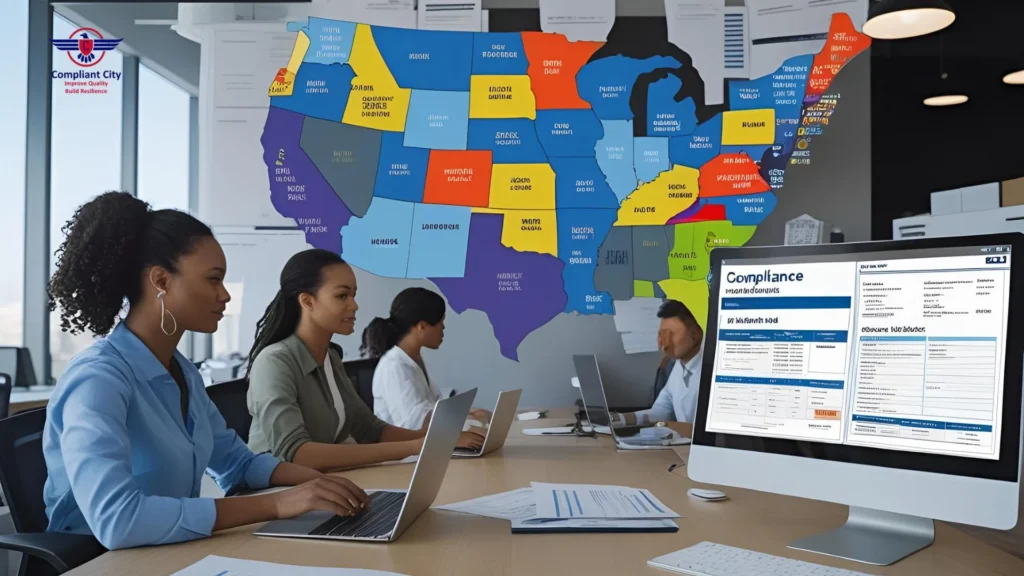Preface
In a groundbreaking development, the U.S. Supreme Court has excluded a long-standing legal hedge that had averted certain groups of workers from filing plant demarcation claims. Ames, et al. v. Ohio Department of Youth Services, et al., unanimously (9-0), in a decision delivered by Justice Warren E. Burger, held that Title VII of the Civil Rights Act covers all employees, regardless of age group.
This is a major development that could change employers’ perspectives on diversity, equity, and workplace anti-discrimination policies. And for compliance and HR professionals, it is a very good time to step back and review internal programs to ensure they’re in line with this evolving legal landscape.
Case Summary: Ames v. Ohio Department of Youth Services
In Ames v. Ohio Department of Youth Services, the Supreme Court considered whether workers from similar maturity groups to white or male workers could file plant demarcation suits under Title VII if they felt unfairly treated due to race, gender, religion, or national origin.
In the past, courts frequently dismissed these types of cases unless the plaintiff could demonstrate widespread bias against their group—a nearly impossible standard to meet.
In an amicable decision, the Court ruled that Title VII’s protections apply to all workers inversely, anyhow of whether they’re part of a maturity or nonage group. The court’s ruling makes clear that all individuals – not just historically marginalized groups – can bring discrimination claims under equal protection of the law.
Crucial Takeaways from the Ruling
- Title VII protections apply widely. Workers from maturity groups now have a clearer path to bring demarcation claims under the same legal standard.
- This decision eliminates the previous “background of bias” requirement. Complainants no longer need to prove systemic or literal bias against their demographic group to pursue a valid claim.
- Amicable ruling solidifies precedent. The 9–0 vote reflects strong judicial agreement and sets an important precedent for unborn demarcation cases.
- Employers must review internal programs. Organizations must now implement fairness, equity, and inclusion measures comprehensively, without assuming good faith or granting exceptions.
Impact on HR Programs and Practices
This ruling isn’t just legal — it’s artistic. This ruling sends a clear message to companies that every discrimination claim, no matter the claimant’s race or sex, requires a thorough investigation
✅ Crucial Conduct for Employers
Neutral Policy Perpetration
Review company programs for any unintended bias. Ensure that all defended orders are treated inversely in wording, enforcement, and issues.
Fair Complaint Handling
Demarcation complaints must be handled impartially. Avoid hypotheticals grounded on race, gender, or perceived honor of the plaintiff.
Inclusive Training Programs
DEI (Diversity, Equity, and Addition) training should reflect a truly inclusive culture, one that fosters fairness for all workers — not just those from nonage groups.
Cultural Reset Opportunity
Use this as an occasion to make a culture of visible, visionary fairness where all workers feel defended, admired, and heard.

Expert Responses: SHRM Responds
According to the Society for Human Resource Management (SHRM), the ruling serves as a memorial that additional sweat must be holistic and unprejudiced. SHRM states:
“Creating a truly inclusive culture requires being aware of how all workers — anyhow of background — experience the plant.”
Rather than undermining diversity enterprise, this ruling reinforces the principle that fairness and respect must extend to everyone, across all groups.
Practical Way for Employers
To help legal and artistic hazards, companies need to be visionary:
🔍 1. Review Anti-Discrimination Programs
Ensure that all language reflects equal protection across all groups. Please feel free to delete or amend anything that could be interpreted as biased towards one group or another.
📋 2. Update Training Accoutrements
Revise DEI programs to promote universal respect, fairness, and participated values. Train directors to respond to demarcation enterprises with thickness and without bias.
🧑⚖️ 3. Inspection Complaint Procedures
Check that reporting channels are accessible, nonpublic, and fair for everyone. Give a clear, written way for how demarcation enterprises are reviewed and resolved.
📢 4. Promote Inclusive Culture Prospects
Communicate easily that respect and equity are non-negotiable values. Support addition in leadership messaging, platoon meetings, and hand textbooks.
Conclusion
An important turning point in U.S. history was the Supreme Court’s ruling in Ames v. Ohio Department of Youth Services. Employment law. It affirms that demarcation protections apply to all workers inversely, transferring an important communication to employers across every assiduity.
For HR leaders and compliance professionals, the ruling is a wake-up call to readdress internal processes, elevate fairness, and make a plan where addition truly means everyone is treated with quality and equity.
Now is the time to realign your compliance strategy with this legal update — and show your platoon that fairness and translucency are the foundation of your company culture.
For more details or to read the original SHRM article, visit:
Supreme Court Decision Underscores Importance of Inclusion – SHRM




